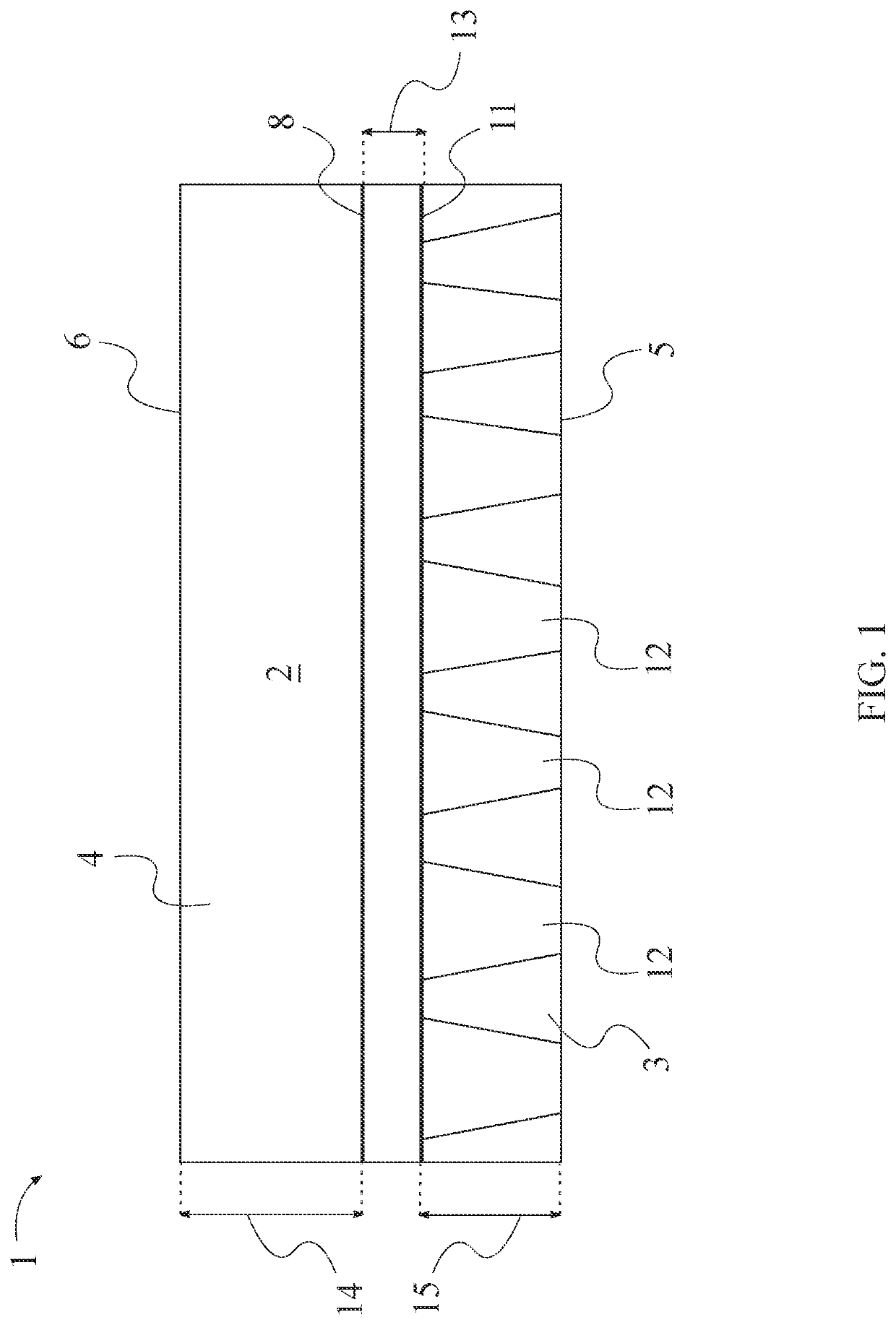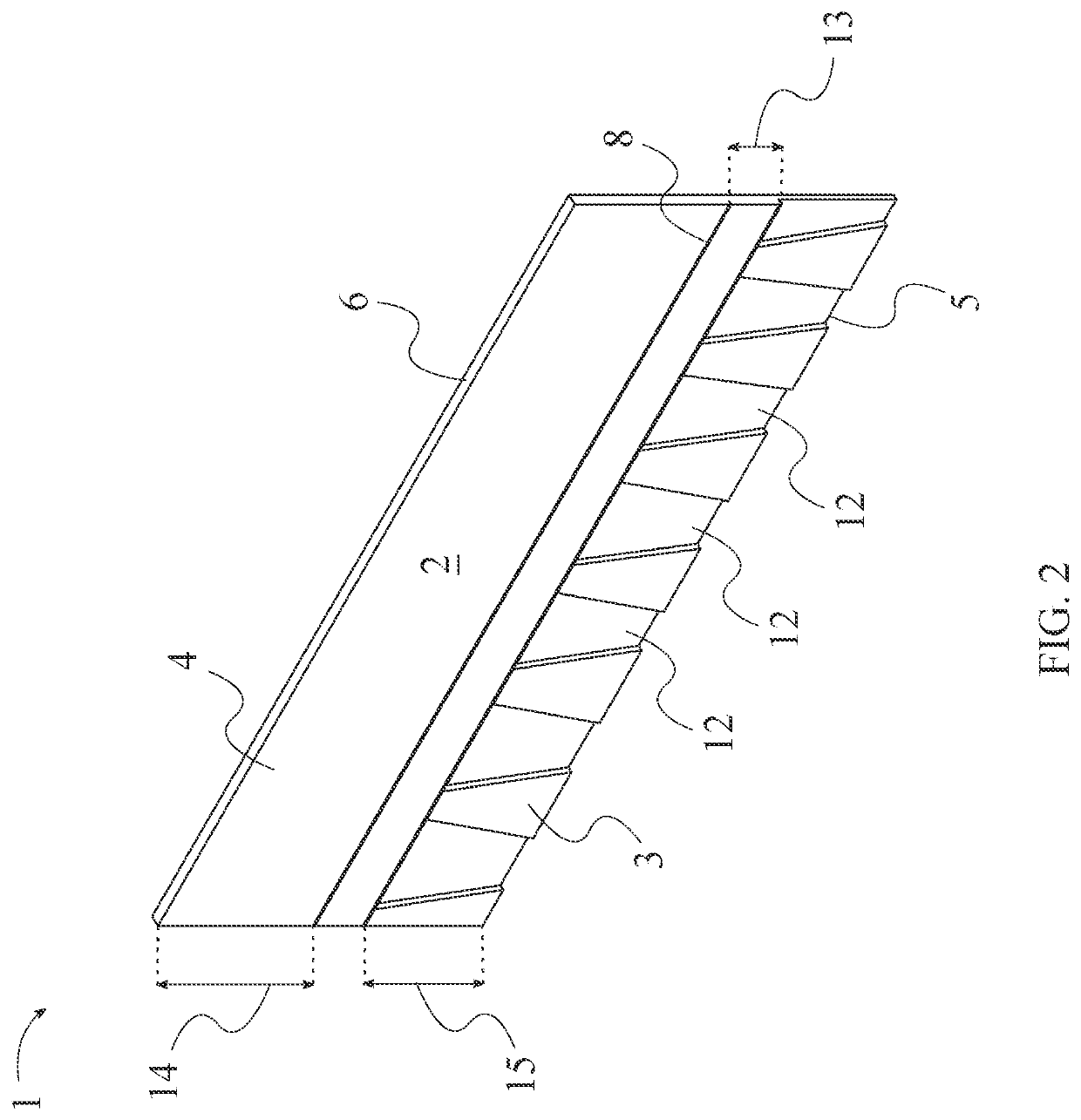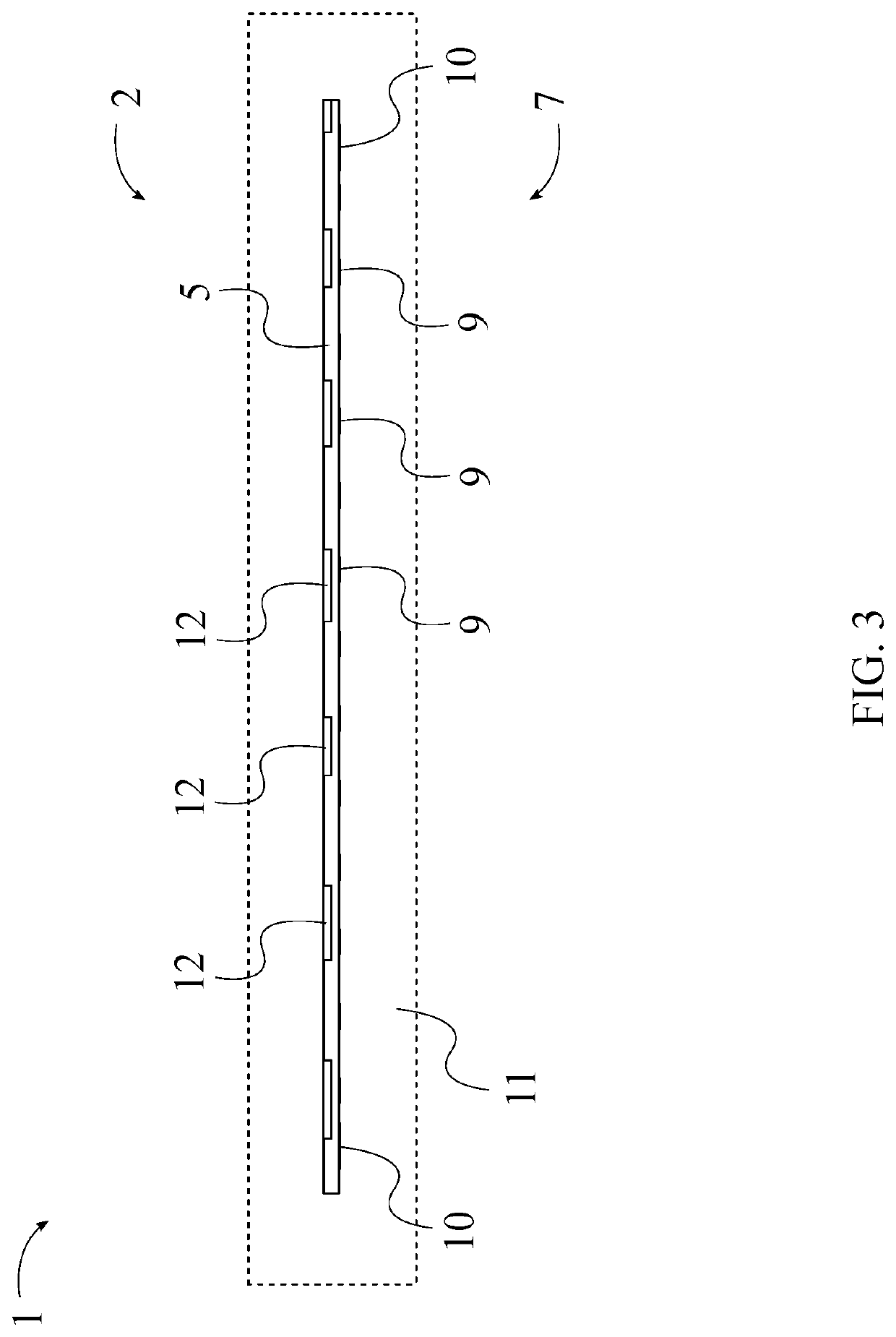Fastener-protecting roofing shingle
a fastener-protecting and roofing technology, applied in the field of roofing shingles, can solve the problems of damage to the shingle, brittleness, and oxidation of asphalt, and achieve the effects of shrinking the fibers of the roofing shingle, and reducing the cost of repairing and maintaining the shingl
- Summary
- Abstract
- Description
- Claims
- Application Information
AI Technical Summary
Benefits of technology
Problems solved by technology
Method used
Image
Examples
Embodiment Construction
[0016]All illustrations of the drawings are for the purpose of describing selected versions of the present invention and are not intended to limit the scope of the present invention.
[0017]The present invention is a fastener-protecting roofing shingle that provides a solution for roofing nails or fasteners that become damaged due to weather exposure resulting from damaged roofing shingles. The general configuration of the aforementioned components allows the present invention to efficiently and effectively protect nails from being exposed to the elements, which decreases the chances of shingle failure due to the nail rusting. The present invention may comprise a shingle body 1, a nailing indicator 8, at least one quantity of liquid sealing adhesive 9, a plurality of adhesive strips 10, and a separation plane 11. The shingle body 1 denotes the volume occupied by the present invention, as shown in FIG. 1. The nailing indicator 8 is a flat line which is used to demarcate the area which,...
PUM
| Property | Measurement | Unit |
|---|---|---|
| distance | aaaaa | aaaaa |
| distance | aaaaa | aaaaa |
| length | aaaaa | aaaaa |
Abstract
Description
Claims
Application Information
 Login to View More
Login to View More - R&D
- Intellectual Property
- Life Sciences
- Materials
- Tech Scout
- Unparalleled Data Quality
- Higher Quality Content
- 60% Fewer Hallucinations
Browse by: Latest US Patents, China's latest patents, Technical Efficacy Thesaurus, Application Domain, Technology Topic, Popular Technical Reports.
© 2025 PatSnap. All rights reserved.Legal|Privacy policy|Modern Slavery Act Transparency Statement|Sitemap|About US| Contact US: help@patsnap.com



